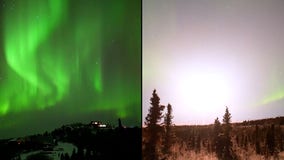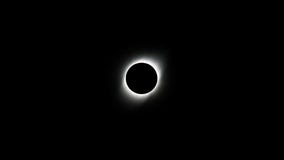Voyager 1 having trouble phoning home as decades-old craft travels through interstellar space
Resolving the issue comes with certain complicating factors, such as the age of Voyager and the time commands sent from Earth take to reach the spacecraft.
Largest solar flare in 6 years leads to problems with radio communications with planes
Thursday’s solar flare is not only the largest of the current solar cycle but also the largest since Sept. 10, 2017, officials say.
The Geminid meteor shower will peak this week. Here’s how to watch
Stargazers can catch the aerial display when it peaks on Dec. 13.
Geminid meteor shower peaks in mid-December thanks to this puzzling asteroid
The Geminid meteor shower peak is in mid December this year, alongside a special moon that will allow better viewing conditions for stargazers to spot meteors to end 2023.
Northern lights visible in Michigan Thursday night, space forecasters say
After a flurry of solar activity that sent four coronal mass ejections toward Earth, the northern lights viewing potential in Michigan could be great.
December stargazing guide: Geminid meteors, Christmas full Moon and star-Moon pairings
The final full Moon of the year will light the sky around Christmas and the Geminid meteor shower peaks in mid-December.
Light pillars illuminate night sky over Canada
What looks like a neat photography trick is a beautiful phenomenon made by Mother Nature.
Earth receives laser beam message from 10 million miles away
NASA’s Deep Space Optical Communications (DSOC) experiment beamed a near-infrared laser from nearly 10 million miles away to the Hale Telescope at Caltech’s Palomar Observatory in San Diego County, California.
NASA's James Webb telescope reveals 'fluffy' planet where it rains sand
This giant, "fluffy" exoplanet has clouds filled with sand that rains down like water does on Earth, scientists have discovered.
Webb Telescope image of Pandora’s Cluster reveals hidden clues of most distant galaxies yet
Two of the galaxies in Pandora's Cluster are nearly 33 billion light years away, the second-and-fourth-farthest galaxies ever observed. Researchers say one galaxy looks like a "peanut" and the other a "fluffy ball" in the JWST images.
NASA rocket launches into Alaskan northern lights
While a rocket launching into the northern lights puts on a spectacular show, it wasn’t just by happenstance. The timing of this launch had to be just right to get the necessary scientific data.
NASA: Record-breaking black hole discovered by Webb and Chandra telescopes
The discovery using NASA's Webb telescope is exciting for black hole research because there is still much unknown about these enigmas of the universe. Astronomers believe black holes formed within the first billion years after the Big Bang.
November night sky highlights: Jupiter on display, Leonid meteor shower peak
Here's a rundown of sky-gazing events to bookmark for November 2023, including the Leonid meteor shower.
October 2023 full 'Hunter's Moon' to light up sky this weekend
The end of October brings the full “Hunter's Moon," and for some observers, it will be eclipsed by Earth.
Southwest offers flights to view 2024 total solar eclipse from the sky
On April 8, 2024, there will be flights scheduled in the direct and partial paths of the total solar eclipse.
Watch: 'Ring of fire' solar eclipse stretches from Oregon to Brazil
Today's solar eclipse is known as a "ring of fire" eclipse for the bright, blazing border that appears around the moon for as much as five minutes.
NASA finds water, building blocks of life in largest-ever asteroid sample
According to NASA, this material serves as a time capsule from the earliest days of the solar system.
NASA Apollo 16 mission item hits auction market, expected to go for nearly $750K
The one-of-a-kind shovel was used to scoop up over 200 pounds of moon samples.
3 astronauts back on Earth after being stuck in space for a year
One of the astronauts that returned to Earth Wednesday is a NASA astronaut, who now holds the record for the longest U.S. spaceflight as a result of the unexpected extended stay.
Northern Lights activity to increase, include auroras further south due to escalating Sun activity
Skygazers in the northern U.S. will want to stay tuned for more aurora light forecasts in the coming years as peak solar activity is expected in 2025 during the Solar Cycle 25.





















